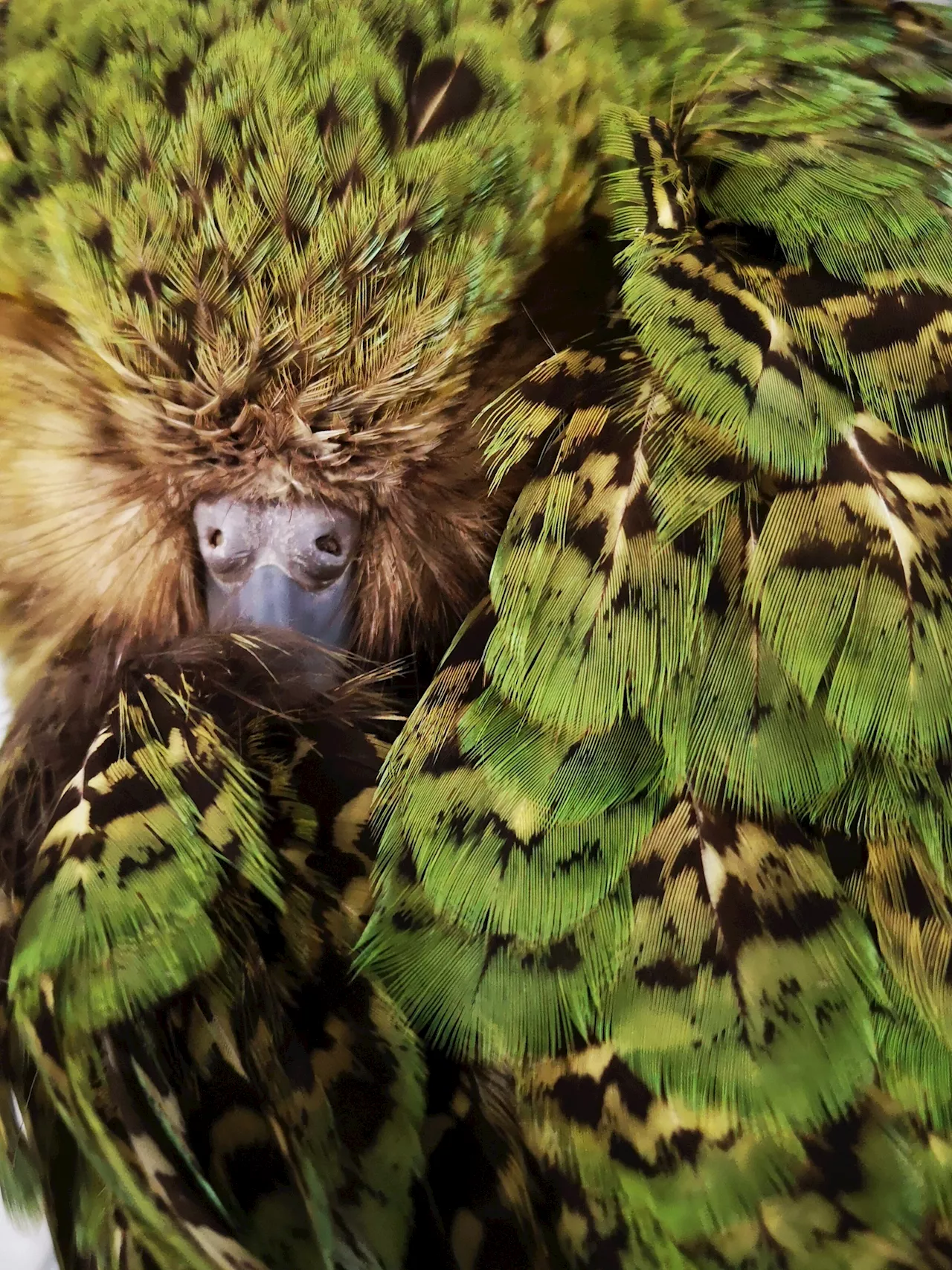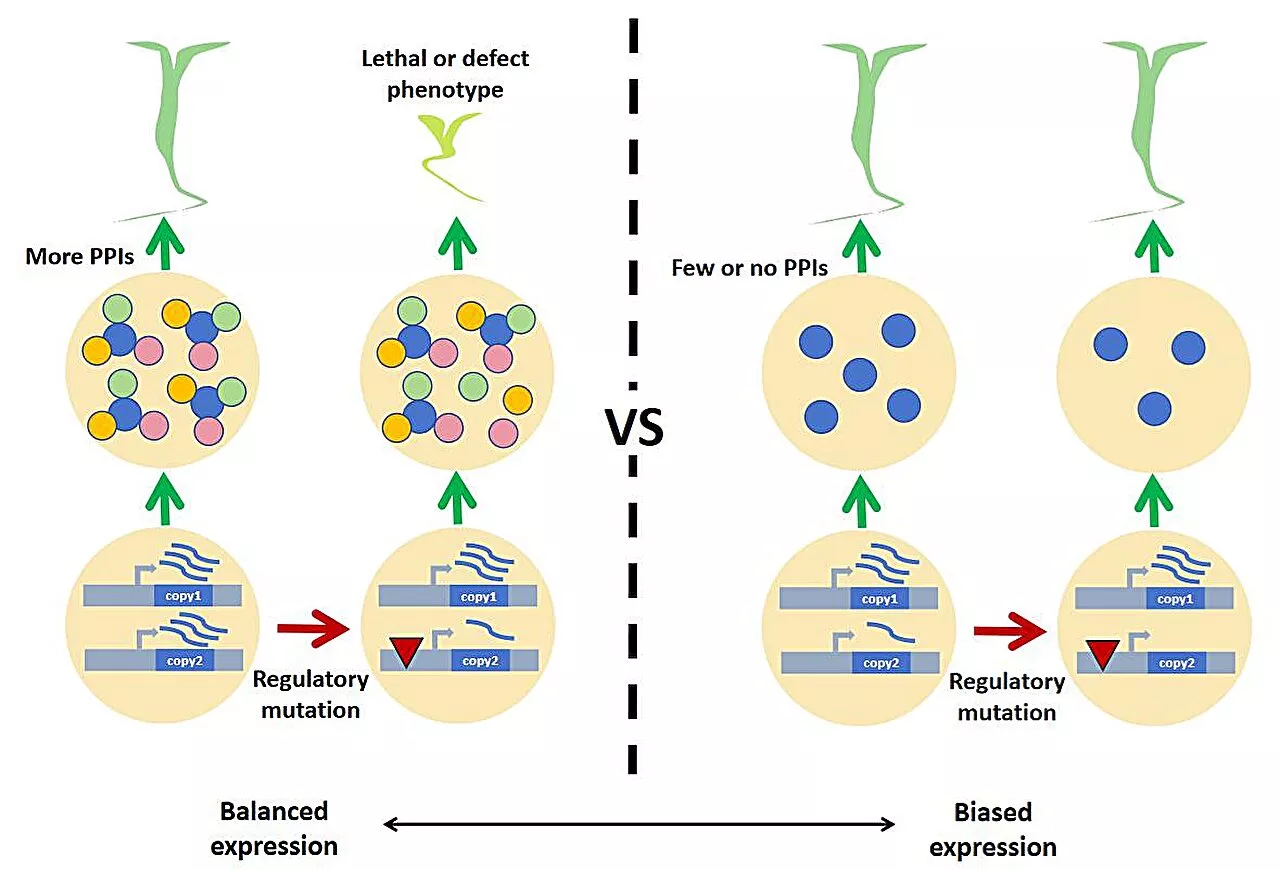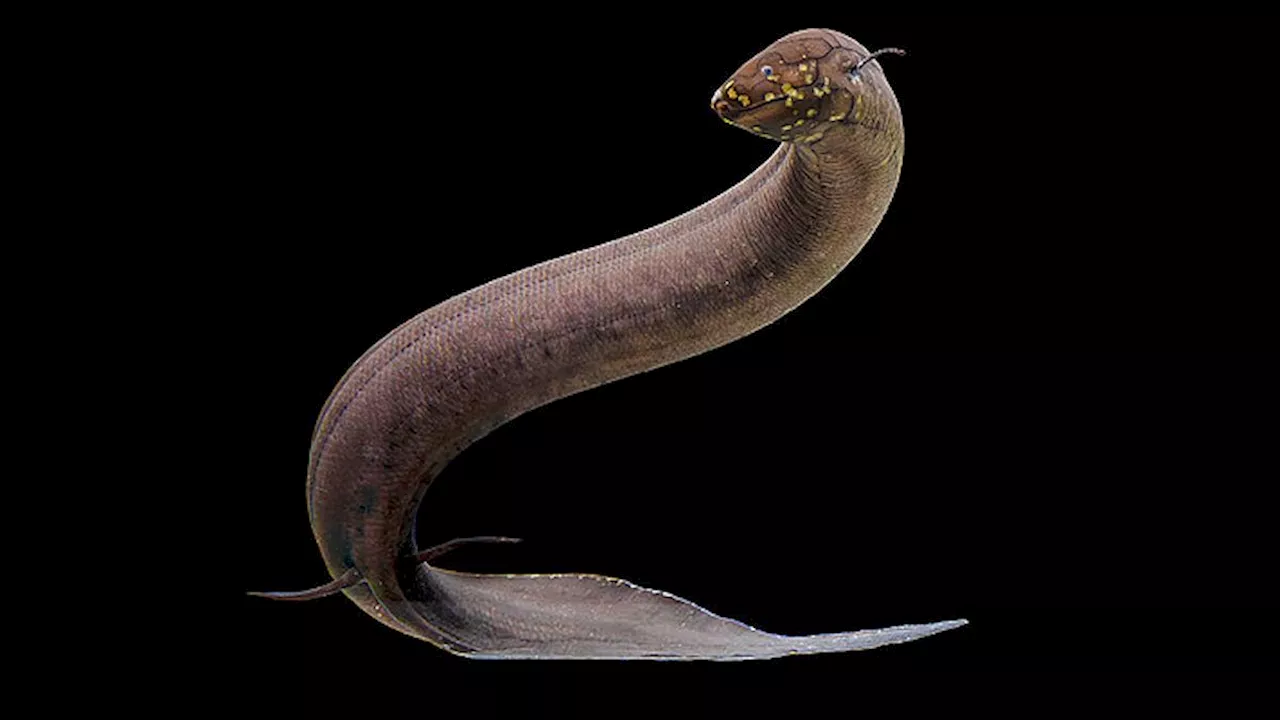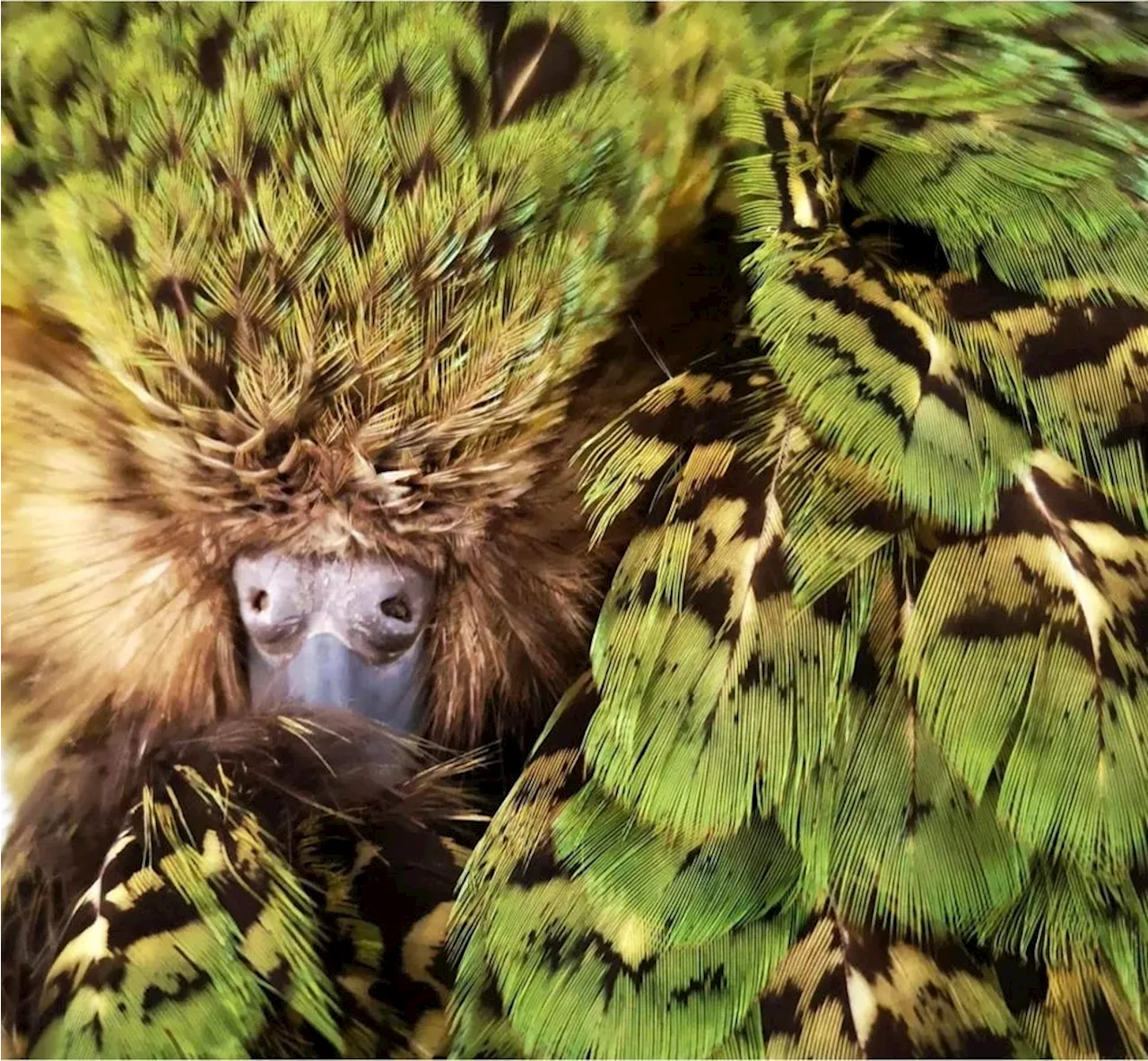“GrrlScientist” is the pseudonym of an evolutionary ecologist/ornithologist & parrot researcher. Earned a B.S. in microbiology (emphasis: virology) & biochemistry at the University of Washington. Worked at the Fred Hutchinson Cancer Research Center for 2 years. Earned her Ph.D.
Genomic sequencing of almost all living kākāpō reveals they evolved two different plumage colors to avoid the sharp eyes of their avian predatorsI’ve been intensely interested in plumage color, especially amongst parrots, for all of my professional life: the genetics, biochemistry and physics of color, as well as how plumage colors influence social and behavioral interactions and how they interact with the environment have always fascinated me.. This large parrot is endemic to New Zealand.
To identify the genetics encoding this color variation and to better understand why it is maintained despite severe population declines, Lara Urban, a Principal Investigator atand the indigenous Māori iwi Ngāi Tahu, analyzed genome sequence data from 168 individual kākāpō, representing nearly all living kākāpō at the time of sequencing. Together, Dr Urban and collaborators identified two genetic variants that underlie the color variation across all the kākāpō they examined.
green and 3 olive feather barbules at different resolutions ; the green feathers show a smoother surface than the olive ones. Photoreflectometry of near-infrared/visible wavelengths in the feather tips; the relative reflectance of an exemplary olive and green is plotted over the wavelength of the reflected light. Dr Urban and collaborators report that kākāpō were originally moss green, and the olive green plumage color first appeared around 1.93 million years ago.
Kākāpō Flightless Parrot Strigops Habroptilus Plumage Color Variation Evolution Ecology Apex Predator Grrlscientist Genomics
United States Latest News, United States Headlines
Similar News:You can also read news stories similar to this one that we have collected from other news sources.
 New Zealand's kākāpō developed different feather colors to evade predatory birds, genome sequencing showsAotearoa New Zealand's flightless parrot, the kākāpō, evolved two different color types to potentially help them avoid detection by a now-extinct apex predator, Lara Urban at Helmholtz AI, Germany and colleagues from the Aotearoa New Zealand Department of Conservation and the Māori iwi Ngāi Tahu, report in the open-access journal PLOS Biology.
New Zealand's kākāpō developed different feather colors to evade predatory birds, genome sequencing showsAotearoa New Zealand's flightless parrot, the kākāpō, evolved two different color types to potentially help them avoid detection by a now-extinct apex predator, Lara Urban at Helmholtz AI, Germany and colleagues from the Aotearoa New Zealand Department of Conservation and the Māori iwi Ngāi Tahu, report in the open-access journal PLOS Biology.
Read more »
 Genome Sequencing Provides Latest Evidence Against Easter Island’s Societal CollapseThe new study also indicates the Polynesian people who settled Rapa Nui mixed with indigenous South Americans centuries before the arrival of Europeans.
Genome Sequencing Provides Latest Evidence Against Easter Island’s Societal CollapseThe new study also indicates the Polynesian people who settled Rapa Nui mixed with indigenous South Americans centuries before the arrival of Europeans.
Read more »
 Angiosperms study provides insights into genome evolution after whole-genome duplicationsWhole-genome duplication (WGD, or polyploidy) is a common and frequent occurrence in plants, providing raw genetic material for evolution. Homoeologs (duplicate genes from a WGD) often diverge in expression levels, while some still maintain similar (balanced) expression levels between the two copies even after tens of millions of years.
Angiosperms study provides insights into genome evolution after whole-genome duplicationsWhole-genome duplication (WGD, or polyploidy) is a common and frequent occurrence in plants, providing raw genetic material for evolution. Homoeologs (duplicate genes from a WGD) often diverge in expression levels, while some still maintain similar (balanced) expression levels between the two copies even after tens of millions of years.
Read more »
 Largest animal genome sequenced — and just 1 chromosome is the size of the entire human genomeTia is the managing editor and was previously a senior writer for Live Science. Her work has appeared in Scientific American, Wired.com and other outlets.
Largest animal genome sequenced — and just 1 chromosome is the size of the entire human genomeTia is the managing editor and was previously a senior writer for Live Science. Her work has appeared in Scientific American, Wired.com and other outlets.
Read more »
 The typical U.S. worker out-earned inflation by $1,400 a year, data showsThe Harris and Trump campaigns lay out their respective economic agendas. NBC News' Sahil Kapur and Vaughn Hillyard join Meet the Press NOW to discuss the dueling economic proposals and their implications.
The typical U.S. worker out-earned inflation by $1,400 a year, data showsThe Harris and Trump campaigns lay out their respective economic agendas. NBC News' Sahil Kapur and Vaughn Hillyard join Meet the Press NOW to discuss the dueling economic proposals and their implications.
Read more »
 Marvel Studios' New Approach: Let TV Shows Be TV Shows: WinderbaumIn celebration of Marvel's 85th anniversary, follow the Marvel Cinematic Universe timeline from Captain America: The First Avenger to Loki Season 2 in 85 unforgettable moments — all of which can be found streaming on Disney+. ► Watch Marvel on Disney+: https://bit.ly/2XyBSIW ► Subscribe to Marvel on YouTube: http://bit.
Marvel Studios' New Approach: Let TV Shows Be TV Shows: WinderbaumIn celebration of Marvel's 85th anniversary, follow the Marvel Cinematic Universe timeline from Captain America: The First Avenger to Loki Season 2 in 85 unforgettable moments — all of which can be found streaming on Disney+. ► Watch Marvel on Disney+: https://bit.ly/2XyBSIW ► Subscribe to Marvel on YouTube: http://bit.
Read more »
